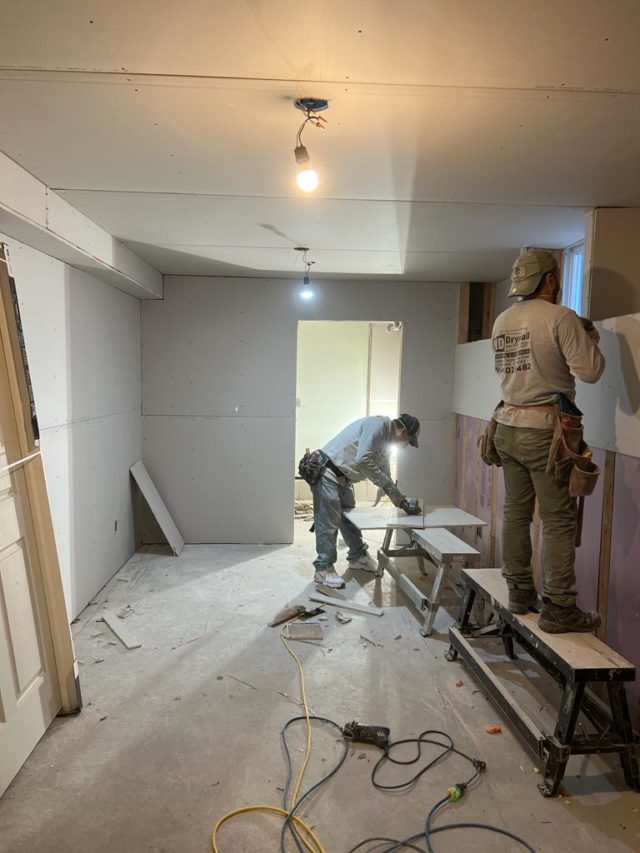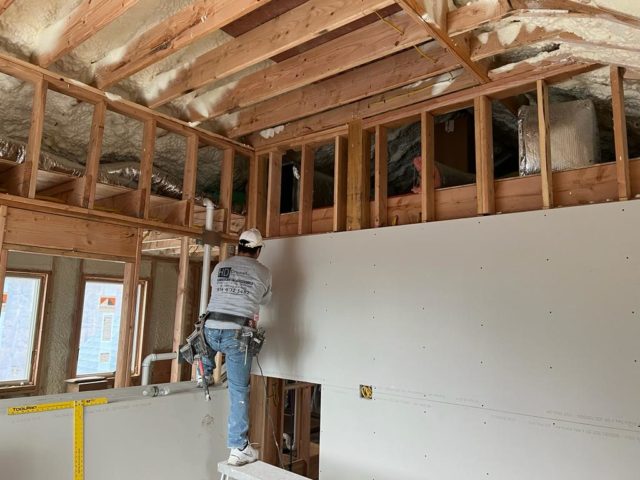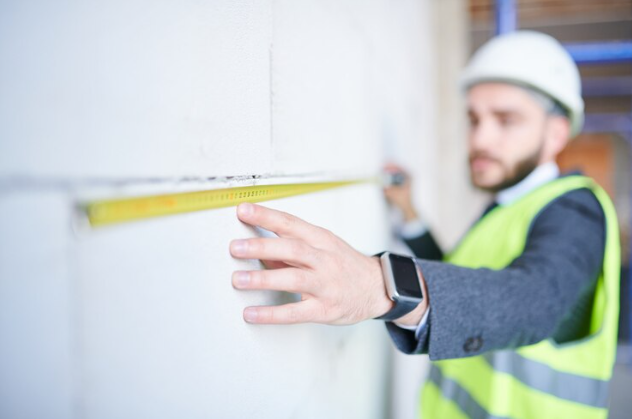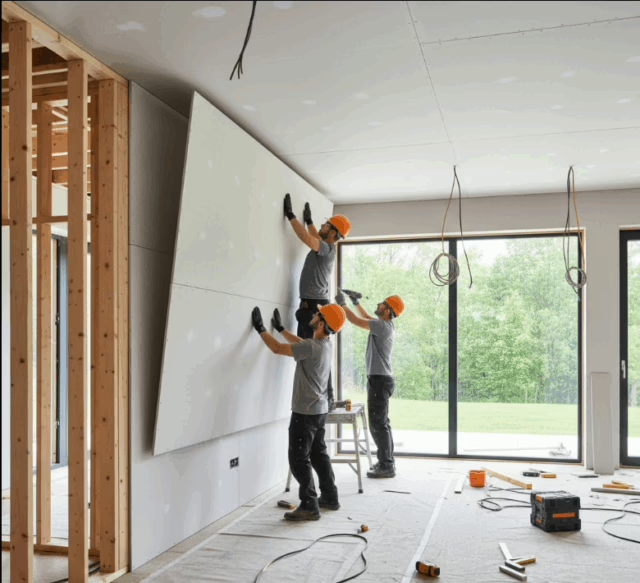In today’s environmentally conscious construction industry, reducing material waste is more than a cost-saving strategy—it’s a necessity. Drywall, a staple in modern building, plays a surprisingly powerful role in waste reduction.
This article will show you exactly how drywall supports greener construction practices, how to install it responsibly, and why it’s a leading choice in sustainable building systems.
Why Waste Reduction Matters in Construction
Construction and demolition activities generate massive amounts of waste every year. In fact, the EPA reports that over 600 million tons of C&D debris are produced annually in the U.S. alone. Significantly, drywall waste contributes to this total.
Although this might seem unavoidable, you can dramatically lower waste levels by choosing the right materials and applying smart building strategies. Drywall, in particular, offers major advantages when used efficiently.
What Makes Drywall an Eco-Friendly Choice?
Drywall—also referred to as gypsum board or sheetrock—is widely used for interior walls and ceilings. However, its environmental benefits are often overlooked. Here’s why it’s a sustainable pick:
It’s Fully Recyclable ♻️
Unlike many materials, drywall can be entirely recycled. The gypsum core and paper layers can be reused for new panels or even in agriculture and industrial products.
It Comes in Modular Sizes 📏
Drywall is produced in standardized dimensions, such as 4×8 or 4×12 feet, which helps reduce on-site cutting and leftover scraps.
It Supports Clean Construction 🔧
Drywall installation is a relatively clean process compared to wet applications like plaster, which means fewer materials are wasted during installation.
Proven Tips to Reduce Drywall Waste on Site
To take full advantage of drywall’s waste-reduction potential, consider the following strategies:
- Plan accurately: Use digital layouts to calculate exact material needs.
- Buy strategically: Order only what’s required—avoid excess.
- Pre-cut panels: When possible, cut panels to size before delivery.
- Reuse leftovers: Keep smaller off-cuts for patching or utility spaces.
- Recycle responsibly: Partner with local facilities to dispose of clean drywall waste.
✅ Discover how HD Drywall helps contractors manage materials with precision and sustainability.
How Manufacturers Contribute to Less Waste
Today, top drywall producers are making eco-friendly strides. Many brands now offer:
- Panels made from recycled gypsum and post-consumer paper
- Drywall produced using energy-efficient processes
- Materials that meet LEED and other green certifications
These innovations not only reduce upstream waste but also make it easier for contractors to build greener from the start.
The Bigger Picture: Drywall and Green Building
Reducing waste isn’t drywall’s only environmental benefit. It also enhances sustainable construction by:
- Improving thermal efficiency in buildings
- Contributing to better indoor air quality with low-VOC formulations
- Lowering carbon emissions through local sourcing and light weight
- Supporting fast expansions with less environmental impact
For more about our commitment to sustainability, visit our About Us page.
Partner with HD Drywall for Low-Waste Solutions
At HD Drywall, we help you minimize material waste while maximizing results. Our experienced team:
- Applies precise layout planning
- Promotes smart ordering and reuse
- Uses eco-conscious materials
- Offers guidance for LEED-compliant drywall systems
📞 Ready to go green on your next build? Contact us here or follow our latest updates on Facebook.
Frequently Asked Questions
1. Is drywall truly recyclable?
Yes, clean drywall can be recycled into new panels or repurposed in other industries like agriculture.
2. How does drywall help reduce waste during remodeling?
Drywall’s modular nature and ease of reuse reduce the need for cutting and discarding materials.
3. Does drywall support sustainable certifications like LEED?
Absolutely. Many drywall products qualify for LEED credits when they include recycled content or are sourced responsibly.
4. How much waste can be reduced by using drywall smartly?
With proper planning and recycling, drywall waste can be reduced by up to 30% per project.
🌱 Make smarter construction choices today. Choose drywall for a cleaner site, a lower carbon footprint, and a greener future. Start with HD Drywall! 🔨






